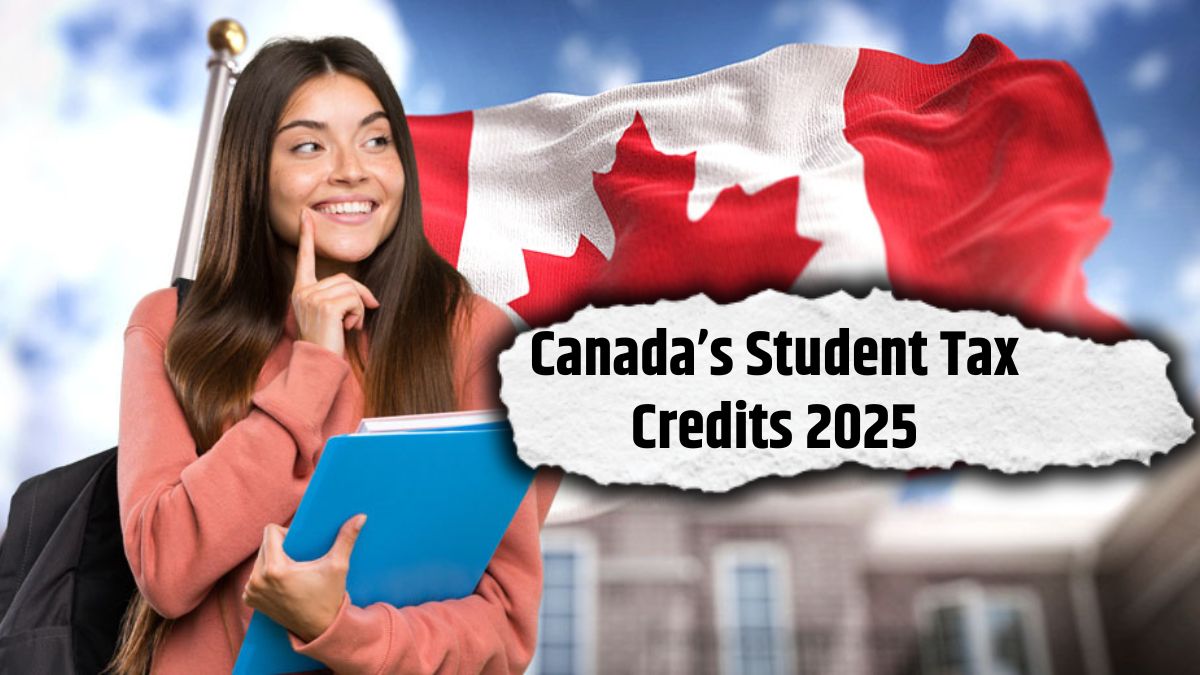Getting higher education in Canada is a big investment, and the financial challenges associated with it for students are also not hidden from anyone. But the good thing is that with the help of tax credits available to students in 2025, this burden can be reduced to a great extent. If you are studying in Canada, then this information can be very useful for you. In this article, we will explain in detail which tax credits you can get the benefit of, what is their eligibility, and how you can claim them.
Tax Credits in 2025: A Welcome Relief for Students
Higher education in Canada can be costly, but the government’s student tax credit programs for 2025 offer substantial relief to reduce the financial pressure. Whether you’re paying tuition, repaying student loans, or relocating for education, several tax benefits are available to ease your expenses.
To qualify, students need to secure key documents—primarily the T2202 form and interest statements—and ensure they file their tax returns on time. When in doubt, reaching out to the Canada Revenue Agency (CRA) or a certified tax advisor is recommended.
Tuition Tax Credit: The Most Widely Used Student Benefit
What is it?
The Tuition Tax Credit is a non-refundable credit that reduces your income tax bill but does not provide a refund if no tax is owed.
Eligibility:
- Enrolled in a recognized post-secondary institution
- Paid tuition of at least \$100 in a given year
Eligible Expenses:
- Tuition fees
- Admission, laboratory, and library fees
- Registration fees, if enrolled
How to claim:
Let’s say your tuition is \$4,000. You could claim a credit of approximately 15%, or \$600. To apply, obtain a T2202 certificate from your institution and include it in your tax filing.
Canada Training Credit (CTC): Cash Back for Skill Development
What is it?
The Canada Training Credit is a refundable tax credit, meaning eligible individuals can receive a cash refund even if they owe no taxes.
Eligibility Criteria:
- Age 26 to 65 years
- Earned at least \$10,000 in the year
- Must not be in the highest federal tax bracket
How it works:
You can accumulate \$250 per year, up to a maximum of \$5,000 over time. Eligible training expenses can be claimed against this limit as outlined on your CRA Notice of Assessment.
Student Loan Interest Credit: Relief on Education Loan Payments
What is it?
This credit allows you to deduct the interest paid on student loans that are provided by government programs.
Important Notes:
- Applies only to federal or provincial student loans
- Private bank loans or personal lines of credit are not eligible
- You can carry forward interest payments for up to 5 years
How to claim:
Use Line 31900 on your tax return to include eligible interest payments.
Moving Expense Deduction: For Students Who Relocate to Study
If you relocated 40 kilometers or more to attend a full-time post-secondary program or a co-op placement, you can claim moving-related expenses.
Eligible Costs Include:
- Transportation (gas, airfare, public transit)
- Moving services and storage
- Temporary lodging (up to 15 days)
- Meals during travel
How to claim:
Complete Form T1-M and retain all receipts for verification. This can be especially valuable for students moving between provinces or regions for education.
Basic Personal Amount: Tax-Free Earnings up to \$15,000
In 2025, the federal income tax exemption applies to the first \$15,000 of income. If your annual income is below this threshold, you won’t owe any tax. However, it’s still vital to file a tax return, because doing so enables you to unlock:
- GST/HST credits
- Provincial education benefits
- The ability to carry forward unused tuition credits
Not filing can cause you to miss out on important financial support programs.
GST/HST Credit
Students from low-income households may receive quarterly payments to offset the cost of goods and services tax (GST) or harmonized sales tax (HST).
Provincial Student Benefits
Certain provinces, like Ontario and British Columbia, offer additional educational assistance and tax relief options. These may include grants, rebates, or deductions on tuition or books.
Make the Most of Student Tax Credits in 2025
The Canadian government’s tax credit programs for students in 2025 are designed to not only reduce the cost of education but also to encourage financial responsibility and independence. By understanding your eligibility, keeping documents in order, and filing on time, you can potentially save hundreds—or even thousands—of dollars.
So, stay proactive:
- Secure your T2202 and loan documents
- Understand your entitlements
- Consult with experts when in doubt
- File early to avoid missing out on any credit or refund
Planning well today can help you build a more financially stable future tomorrow.
FAQs
Q1. Who is eligible for the Tuition Tax Credit in Canada?
A. Any student enrolled in a post-secondary institution with tuition fees over \$100 in a calendar year.
Q2. Can I claim interest on private student loans?
A. No. Only interest on federal or provincial government-issued loans qualifies.
Q3. What is the Canada Training Credit (CTC)?
A. A refundable tax credit for Canadians aged 26–65 who earn at least \$10,000 annually. You can claim \$250 per year, up to \$5,000 in lifetime training credits.
Q4. Can students claim moving expenses on their taxes?
A. Yes. If you moved 40 km or more closer to a school or job, you can claim eligible moving expenses.
Q5. Do students need to file taxes if they earn under \$15,000?
A. Yes. Even if you don’t owe taxes, filing allows you to claim benefits like GST/HST credits and carry forward tuition credits.









